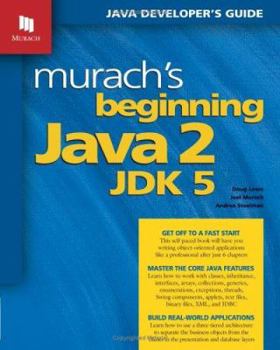Murach's Beginning Java 2, JDK 5
Select Format
Select Condition 
Book Overview
Includes the useful features of Java 5.0, also known as version 1.5. This book shows you how to use a three-tiered architecture to separate the business classes, presentation classes, and database... This description may be from another edition of this product.
Format:Paperback
Language:English
ISBN:1890774294
ISBN13:9781890774295
Release Date:January 2005
Publisher:Mike Murach & Associates Inc
Length:782 Pages
Weight:3.46 lbs.
Dimensions:9.8" x 1.8" x 8.0"











